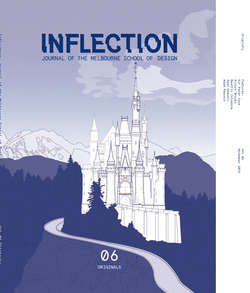Читать книгу Inflection 06: Originals - Beatriz Colomina - Страница 8
На сайте Литреса книга снята с продажи.
ОглавлениеCITIES THROUGH THE LOOKING GLASS
QUESTIONING ORIGINALITY IN COPYCAT CITIES
Betsabea Bussi and Zeynep Tulumen
Architectural plagiarism is a widespread phenomenon, marked by the widespread of ‘Copycat Cities.’ New versions of Paris, Venice and villages with English or Dutch motifs have spread internationally, detached from local physical and cultural contexts. Urban mimicry is becoming a remarkable residential design strategy in China, where it affects not only single buildings or monuments but entire urban landscapes, which are imported from European regions.
The allure of European architectural imagery is shaping the urban fabric of Asian cities. These copycat cities are not theme parks. Instead, they aim to recreate convincing residential neighbourhoods, complete with amenities and services.
This accuracy of production contributes to the impression of engagement with the original European lifestyle for inhabitants.
On a broader scale, copycat cities challenge traditional concepts of originality and authenticity. The ‘Copy’ has traditionally been considered the antithesis of the ‘original’ in Western discourse. Given the tension between traditional notions of originality and copycat cities, the question arises: is it originality or authenticity we seek in architectural products?
This article is an investigation into the socio-political motivations for producing replica European cities in China. Looking to case studies from the ‘One City–Nine Towns’ redevelopment project, this article questions the authenticity of replicated residential cities by examining architectural form and meaning.
Seminal Theories on Duplitecture
In her work on copycat cities, journalist Bianca Bosker coined two terms that define imitative urban settings, ‘simulacrascapes’ and ‘duplitecture.’1 Simulacrascapes are settlements which transplant architectural and urban elements from foreign cultural identities. Duplitecture results from three layers of copy: the architectural style, the layout and geometry of streets, and non-material signifiers that simulate the desired atmosphere.2 The difference between tourist monuments and residential copycat towns is that monuments and famous attractions are not inhabited by residents. These copies do change and influence the imagery of their new setting, they remain foreign to the local context. Contrary to this, Western-style residential blocks are inhabited spaces, designed to meet the housing needs of the population.
Bosker observes that copying and appropriating foreign architecture is constitutive of the traditional Chinese culture. These appropriations are not direct replications of Western urbanscapes; instead, the original setting is adapted to the Chinese landscape. Elements considered iconic are selected and replicated. Bosker explains that Chinese interpretations of European towns differ profoundly from European visions of their cities. Due to the evolutionary aspect of their adaption, these transnational landscapes can be considered ‘original copies’ as they assemble aesthetic features in inventive and unique ways. Bosker argues most themed cities are not mere reproductions, rather they acquire their own degree of authenticity as a result of interpretation, appropriation and customisation.3
Simulacrascapes are critiqued for de-contextualise and counterfeiting imported urban imaginaries. These concerns highlight the Disneyfied image of these transplanted cities (comparative to theme parks) and their status as products of mass consumption.4
Along with the sacrificial nature of copies, urban mimicry produces a fragmented image due to imperfections in the copying process.5 The construction of architectural fantasies seeks only emotional satisfaction for the consumer. This results in offering confused local identity or lack of contextual authenticity, and represents a threat to indigenous values.
Thames Town, Songjiang district, Shanghai. Image Courtesy of Huai-Chun Hsu on Wikimeadia Commons.
Bosker argues that ‘false’ cityscapes are ‘original replicas’ that carry forward the Chinese tradition of replication in a new manner.6 Putting aside the aesthetic suitability of these copies, they are a pragmatic and prompt solutions to the growing housing demand in China. Scholars Maria Francesca Piazzoni and Tridib Banerjee stress the role of local habits and culture in developing these European-inspired buildings to become part of the everyday environment.7 Thus, authenticity and originality do not reside in architectural forms but rather in how they are inhabited. From this perspective, duplitecture possesses a degree of originality and is not necessarily a threat to local identity.
The Cultural and Political Context of Copycat Cities
The phenomenon of imitation in architectural and urban design has grown significantly in the last two decades. Contributing factors include rapid growth of consumerism in conjunction with a rising middle class. This middle class is progressively exposed to a higher and higher number of Western cultural products, implanting the desire for mainstream foreign lifestyles.8 In particular the research for “ersatz experiences in the cityscapes” is widespread in China.9 Rapid urbanisation favours the spread of these emulative settlements. Globalisation also plays a role in catalysing consumers’ desires by increasing exposure to foreign architectural products and ways of life.10
Themed suburban clusters in China embody the search for two main values. Firstly, the chase of the so-called ‘Chinese dream’ by the middle and upper class, Western-style living becomes a manifesto of a particular class desire—a way of expressing their prosperity along with the pride of belonging to a distinct community.11 Secondly, it reflects the desire of China to connect with the world after decades of relative isolation.12
Along with cultural implications, political interest plays a role in this phenomenon. Replication of European towns becomes a strategy to control the spread of urban development. The aesthetic value of European towns is used to attract residents. The state appeals to middle-class ambitions in favour of specific urban policies, aiming to guide population growth in suburban areas, decreasing demographic pressure on metropolitan areas. As a consequence, the landscape of China has been dramatically remodelled by the abundance of simulacrascapes. These copycat urban developments are not a result of whimsy, they follow urban design approaches of post-reform China. The ‘xenophilic motif’ is driven by the admiration of foreign urban forms as a result of a geographical romanticism. The goal of this strategy is to chase the yang
